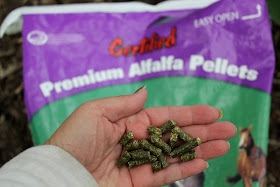Wisdom from my little ole’
fig tree?
People have sewn them
together and worn them, eaten them as a laxative, and grown them for thousands
of years. It’s named in the Tanakh, New Testament and Quran. King Solomon
mentioned them around 940 B.C. and Charles Dicken’s in 1848 rewrote a proverb
using it.
In my new adventure of being a fig
farmer, I wanted to share what my figs taught me today.— (I am currently
growing three Chicago Figs in my
Zone 5b Heartland Garden — Ficus carica
“Hardy Chicago.”
Monday of this week, it was
a beautiful 70˚F and gardening was blissful. Tuesday we got our first central
Indiana snow. Although the snow melted on impact, I am doing research inside
today.
Figs are the first tree
mentioned in the Bible. They are also the most mentioned fruit —over 47 times.
Figs represented peace and prosperity.
But in James chapter 3, he
warns listeners how evil our tongues can be. James 3:7-8 notes that “every species species of beasts and birds,
of reptiles and creatures of the sea, is tamed and has been tamed by the human
race. But no one can tame the tongue; it is a restless evil and full of deadly
poison. “
This was especially
true during the 2012 Presidential Campaign as Americans chose sides.
James further explains by
using analogies in (3:11 – 3:13):
…From the same mouth come both blessing and cursing.
My brethren, these things ought not to be this way.
Does a fountain send out from the same opening both
fresh and bitter water?
Can a fig tree, my brethren, produce olives, or a
vine produce figs? Nor can salt water produce fresh.
Who among you is wise and understanding? Let him show
by his good behavior his deeds in the gentleness of wisdom.
As Matthew Henry wrote around 1706: A truly wise man is a
very knowing man: he will not set up for the reputation of being wise without
laying in a good stock of knowledge; and he will not value himself merely upon
knowing things, if he has not wisdom to make a right application and use of
that knowledge. These two things must be put together to make up the account of
true wisdom: who is wise, and endued with knowledge? Now where this is the
happy case of any there will be these following things:—1. A good conversation. If we are wiser than others, this should be
evidenced by the goodness of our conversation, not by the roughness or vanity
of it. Words that inform, and heal, and do good, are the marks of wisdom; not
those that look great, and do mischief, and are the occasions of evil, either
in ourselves or others. 2. True wisdom may be known by its works. The
conversation here does not refer only to words, but to the whole of men’s
practice; therefore it is said, Let him show out of a good conversation his
works. True wisdom does not lie in good notions or speculations so much as in
good and useful actions. Not he who thinks well, or he who talks well, is in
the sense of the scripture allowed to be wise, if he do not live and act well. 3. True wisdom may be known by
the meekness of the spirit and temper: Let
him show with meekness, etc. It is a great instance of wisdom prudently
to bridle our own anger, and patiently to bear the anger of others. And as
wisdom will evidence itself in meekness, so meekness will be a great friend to
wisdom; for nothing hinders the regular apprehension, the solid judgment, and
impartiality of thought, necessary to our acting wisely, so much as passion.
When we are mild and calm, we are best able to hear reason, and best able to
speak it. Wisdom produces meekness, and meekness increases wisdom.
So, in short, I learned from
my figs, James and Matthew Henry:
Words
that inform, and heal, and do good, are the marks of wisdom; not those that
look great, and do mischief, and are the occasions of evil, either in ourselves
or others. — Matthew Henry
Now, I just need to pop a fig in my
mouth to temper my tongue every time I’m tempted to use words that look great,
and do mischief and are the occasions of evil. And when I don’t have a mouthful
of fig, to use words that inform, heal and do good — marks of wisdom.



























.jpg)

